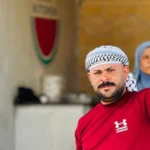Efforts to find clean water sources in dry regions have led to a groundbreaking discovery. A team of scientists has created crystals capable of generating water from air without requiring energy.
Researchers from New York University Abu Dhabi, Jilin University in China, and the Centre for Smart Engineering Materials collaborated to design these innovative crystals, called Janus crystals. Inspired by desert plants and animals, the crystals capture moisture from the air efficiently.
Their findings, published in the Journal of the American Chemical Society, suggest that this technology could revolutionize water collection on a large scale. It offers a sustainable alternative to energy-intensive desalination, which currently provides most of the UAE’s water.
Harnessing Atmospheric Water
The Earth’s atmosphere contains about 13,000 cubic kilometers of water, according to the US Geological Survey. Yet, there are limited ways to efficiently tap into this vast resource.
Professor Pance Naumov, a chemistry expert at NYU Abu Dhabi and the lead researcher, explained:
“We want to leverage the humidity present in the air and convert it into drinkable water without the need for energy-intensive desalination. The water collected is free from salts, making the process much simpler and environmentally friendly.”
Prof. Naumov highlighted that the UAE, with its fluctuating coastal humidity, is an ideal location for this technology. He added that the Janus crystals are record-breaking in their water collection capacity over a specific time and surface area.
How Do Janus Crystals Work?
These crystals have two distinct surfaces: one that repels water (hydrophobic) and one that attracts water (hydrophilic). Moisture is drawn to the hydrophilic surface and transported by the hydrophobic side to a receptacle. This dual functionality is why they are named Janus, after the Roman god with two faces.
Another remarkable feature of Janus crystals is their optical transparency. When light passes through the crystals, it helps monitor water collection. If water droplets are present, they affect the light’s transmission, allowing for real-time monitoring.
Environmentally Friendly Alternatives
Prof. Naumov mentioned that other organic crystals could potentially replicate Janus crystals’ water-collecting ability. These materials could be biodegradable and leave no environmental footprint after use.
The next step is optimizing the crystal composition, testing different materials, and scaling the technology for industrial applications.
Nature’s Inspiration: Desert Beetles
Nature has already mastered this concept. The Namib Desert beetle has hydrophilic bumps on its shell to trap water from fog, while hydrophobic channels direct it to its mouth. This ingenious adaptation has fascinated researchers.
A study published in PNAS Nexus examined how the beetle’s unique shell surface aids water collection. Coating the shells with nail polish, which alters surface texture, reduced water harvesting, showing the importance of tiny surface irregularities.
Dr. Hunter King from Rutgers University explained:
“The texture of a surface significantly impacts its ability to collect water. Our findings could help improve water-harvesting devices.”
Future Applications
The discovery of Janus crystals and inspiration from desert beetles open doors to new water-collection technologies. These solutions could provide sustainable, energy-free water sources in arid regions, benefiting both humans and the environment.








